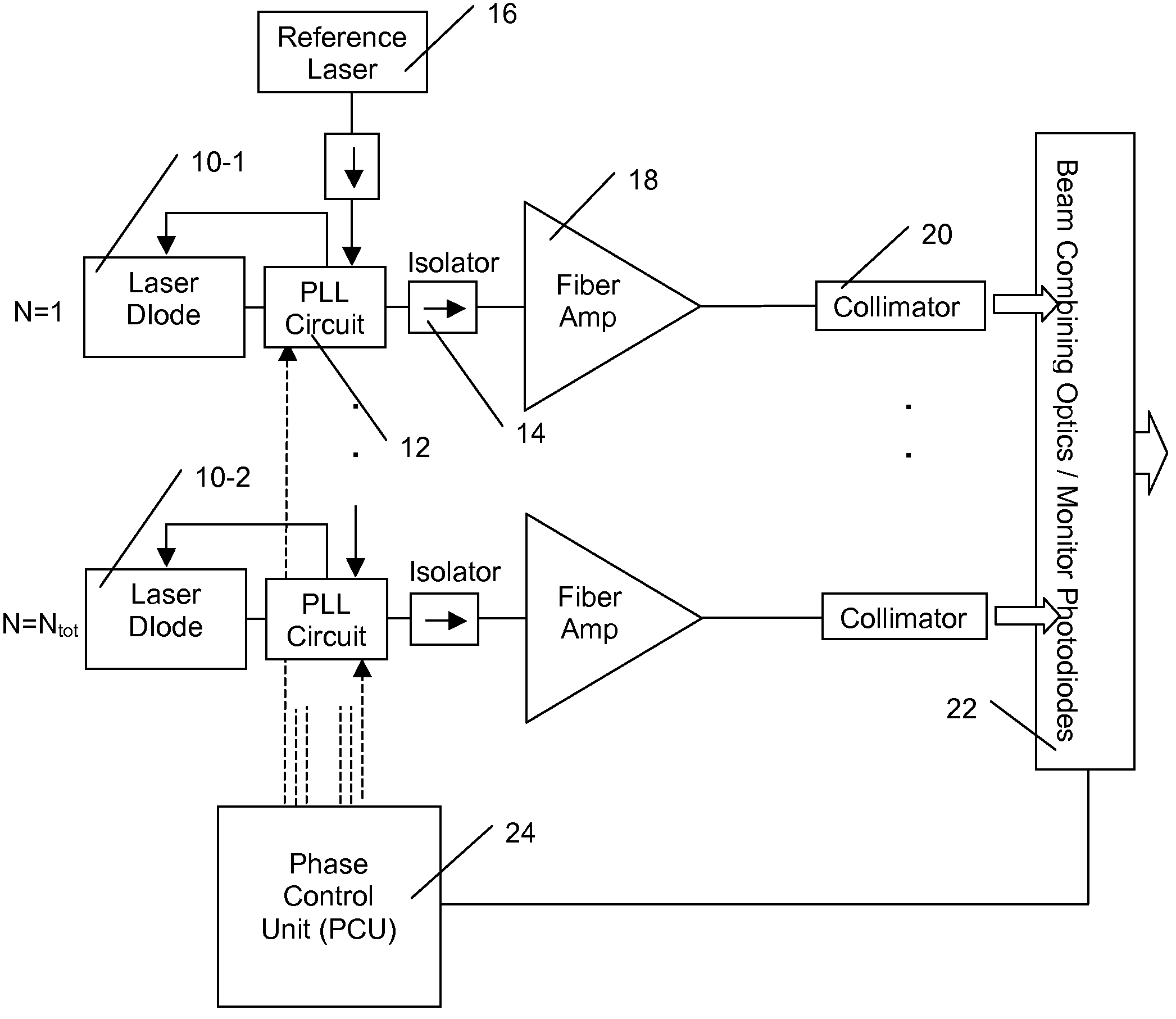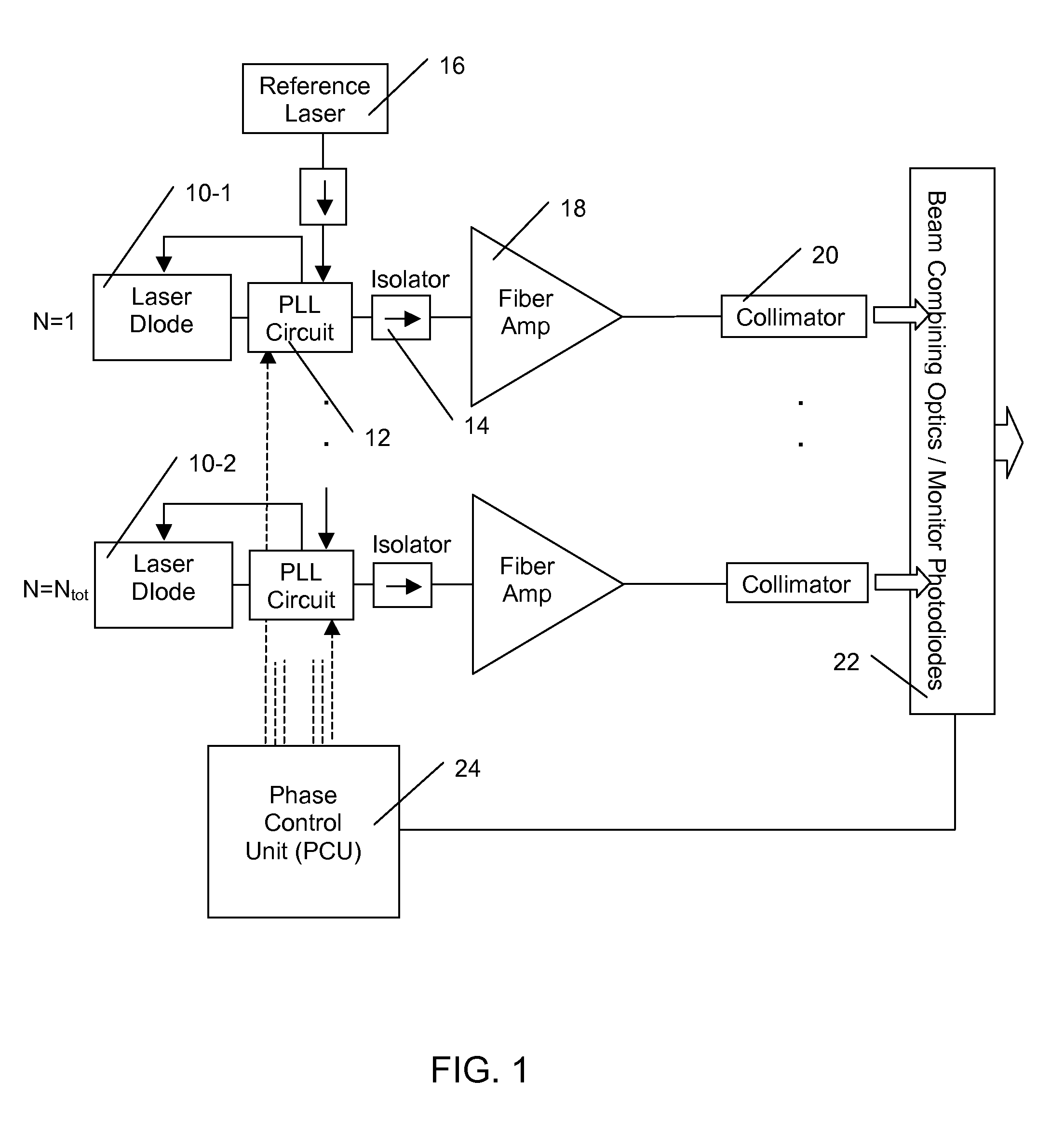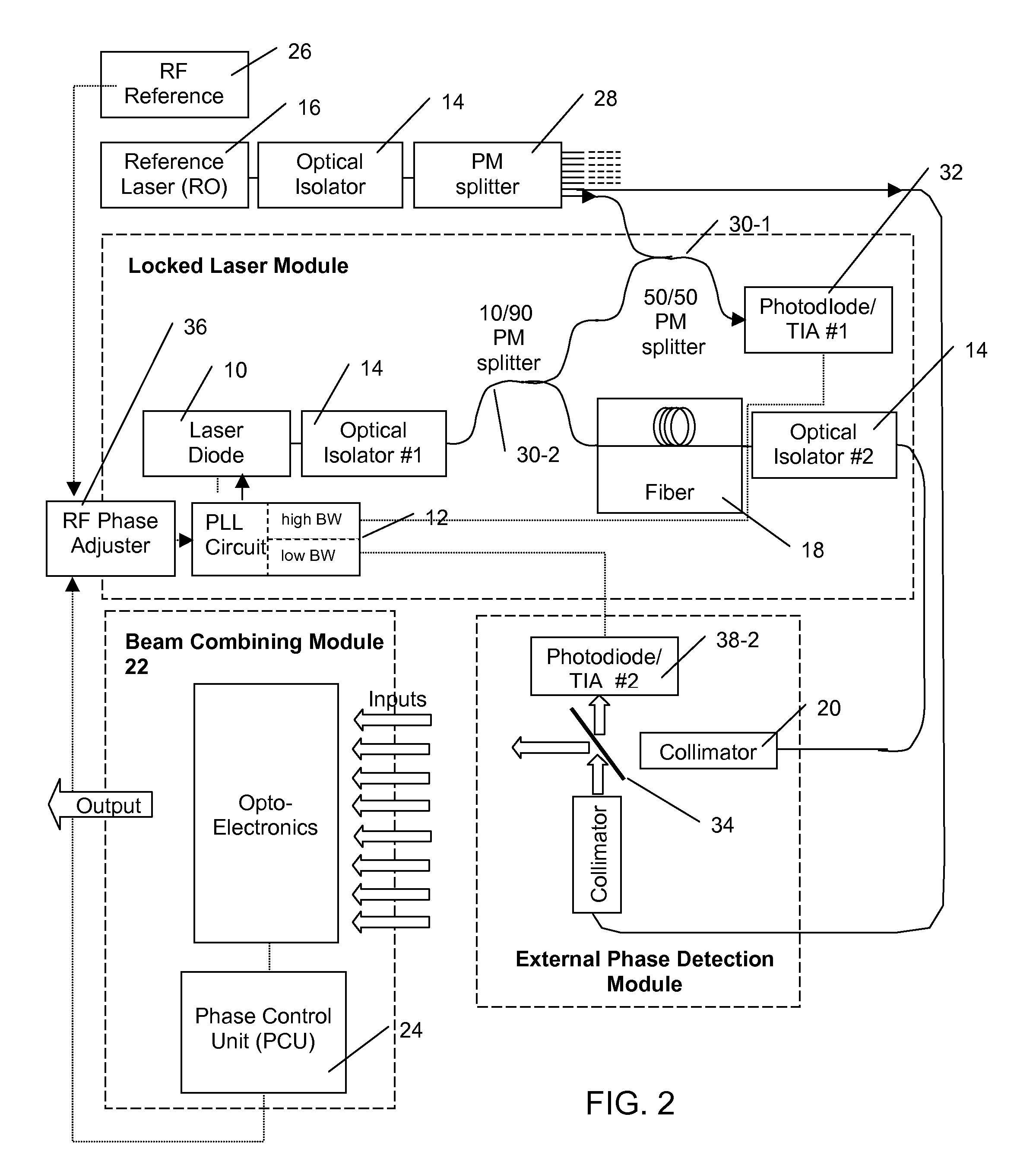Electronically phase-locked laser systems
a laser system and phase lock technology, applied in semiconductor lasers, laser details, electrical equipment, etc., can solve the problems of thermal non-uniformities such as filamentation producing spatially and spectral multi-mode outputs, poor beam quality of semiconductor diode lasers above 1 watt, and affecting the performance of lasers. achieve high optical output power levels, limited beam quality, and high electrical efficiency
- Summary
- Abstract
- Description
- Claims
- Application Information
AI Technical Summary
Benefits of technology
Problems solved by technology
Method used
Image
Examples
example
1 MW Coherently and Spectrally Combined Laser
[0073]In an alternate example, ten high power laser modules, each producing 100 KW at 10 unique wavelengths, are spectrally combined. The module consists, for example, of an array of 217 phase-locked laser diodes 10, which are used to seed 500 W, single mode, single polarization, single frequency amplifiers 18. Each module is spaced in wavelength by 1 to 0.01 nm and combined by a free space wavelength beam combiner utilizing dielectric thin film filters, volume Bragg gratings, unbalanced interferometers / interleavers or planar diffraction gratings.
[0074]In conclusion, the semiconductor laser phase-locking techniques herein provide several advantages, including the realization of various high power, electronically phase-locked laser systems with improved scaleability, reduced complexity and improved performance, as well as electronic linewidth narrowing of laser diodes. These applications are the consequence of the techniques disclosed here...
PUM
 Login to View More
Login to View More Abstract
Description
Claims
Application Information
 Login to View More
Login to View More - R&D
- Intellectual Property
- Life Sciences
- Materials
- Tech Scout
- Unparalleled Data Quality
- Higher Quality Content
- 60% Fewer Hallucinations
Browse by: Latest US Patents, China's latest patents, Technical Efficacy Thesaurus, Application Domain, Technology Topic, Popular Technical Reports.
© 2025 PatSnap. All rights reserved.Legal|Privacy policy|Modern Slavery Act Transparency Statement|Sitemap|About US| Contact US: help@patsnap.com



